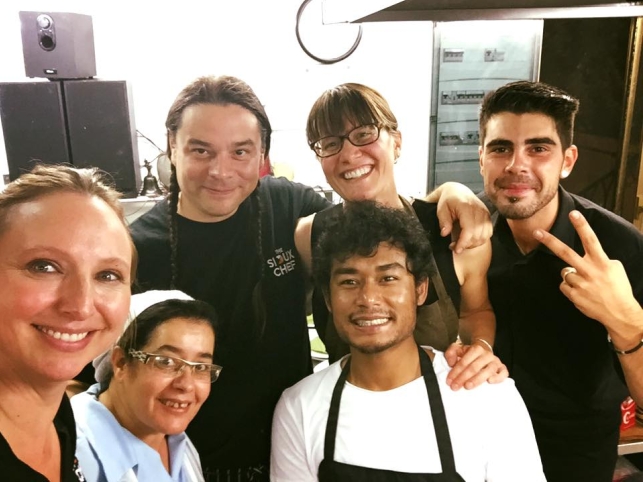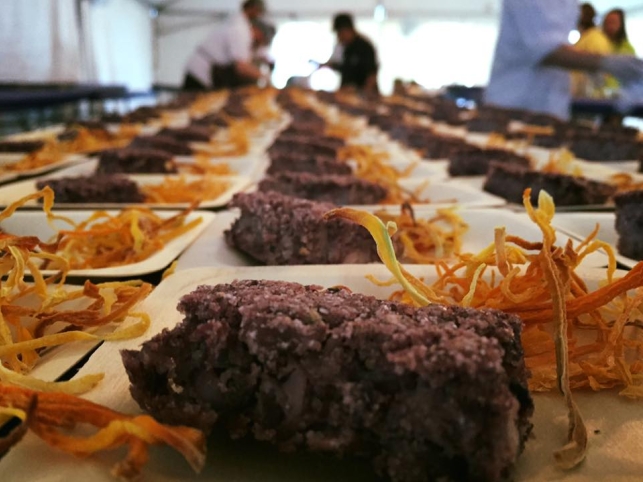Meet Sean Sherman. Also known as: Sioux Chef.
"I started cooking at a really young age." he asserts gently, with great composure.
At 41, and owning much cuisine experience---his first job at 13 was at a tourist restaurant---he humbly attests to "a lot" of culinary knowledge. Judging by a hint of his complementary entrees and beverage-options, we are quick to believe him. Dishes such as bison with chokeberry, cedar tea, and rabbit bone broth will grace the upcoming menu of Sherman's restaurant, The Sioux Chef an Indigenous Kitchen. Its official commencement is expected in late 2016 or early 2017.
Sherman is of the Lakota tribe, and ironically began life with only one convenient grocery store in close proximity. Since the Removal Act of 1830 purported by President Andrew Jackson in addition to the subsequent move to reservations, he argues sensibly, Native Americans gradually lost their once-remarkable intimate knowledge of the earth. As game was killed off and timber was utilized largely by immigrant settlers, most natives were forced to adapt to a new way of life---a way of life that, unfortunately, most often meant succumbing to self-destruction. Sherman acknowledges that, due to conditions and forced adaptation, many of his people continue to contract diseases such as diabetes and heart-illness.
Growing up on the Pine Ridge Reservation in South Dakota, little could Sean guess that his encounters with nature in the U.S. Forest Service in the Black Hills would work towards his future dream, "Bringing Native American culture into the modern world." As a field surveyor, he learned to identify countless foliage and wayside herbs---skills which fostered the desire which is now his cause on behalf of his people and all who enjoy a time of culinary delights pre-dating the Colonial period. In ways, he is on a crusade to restore the vision of a people group the whole of America is in some way indebted to. In the spirit of Squanto, Sherman anticipates passing on his knowledge through training institutions and---we hope---cookbooks.
Sherman's passion is undeniable: "There's so much food around us...there are tons of flavors. There is so much fruit and there are berries that grow. There are so many roots. There are wild potatoes. There's wild ginger."
And, unlike the mainstream and even healthier dining restaurants options available, beef and chicken are nowhere to be found:
"The meats were easy because there's venison, there's duck, there's bison, there's rabbit. There is also squirrel, muskrat and things like that. And all the river fish: the walleye, the trout, whitefish, northerns. There were quite a few options out there."
In fact, the menu extends even beyond organic:
"I modernize the food some, but I try to keep it really minimalist style in cooking. I'm only using a few ingredients. I'm not using any of the processed sugar, no flour, no beef, pork or chicken. I'm trying to really stay true to a lot of the indigenous ingredients as much as possible. I might add a few organic vegetable pieces here and there, but for the most part I'm probably hitting 95 percent indigenous options on the menus that I build."









